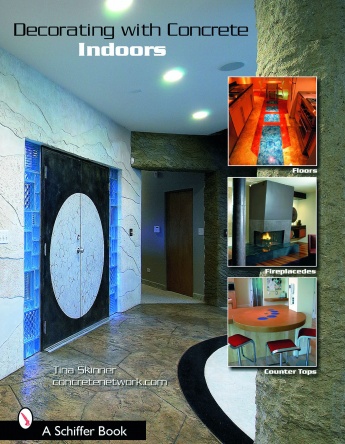More Opportunities on Main Street

Trends across the Main Street commercial tend to align with our traditional commercial projects.
Shown: Design Smart carpet tile collection featuring StrataWorx backing by Philadelphia Commercial.

As the economy and consumer confidence improves, more opportunities are available with the small business owners who make up a significant portion of the Main Street business.
Shown: Pentz Blockade.

Armstrong Flooring’s new Main Street wing beacon display that will start ship in early February 2018.

While colors or visuals are typically biggest driver, there is a preference for products that allow for quick turnaround and easy installation.
Shown: Karndean.




In the following article, you will learn...
- what types of flooring are trending in the Main Street commercial segment
- strategies for marketing to small business owners
Small businesses are a key driver of the U.S. economy and provide a wealth of opportunities for specialty flooring retailers who have an educated sales staff and the range of products that can handle varied projects. From local dentist offices and boutiques to hair salons and business offices, there are a multitude of prospects.
It’s a $1 billion segment and growing, according to presenters at the Flooring America/Flooring Canada Winter convention.
Independent retailers can get into the category by pounding the pavement and through word-of-mouth referrals. Establishing price and credit policies and careful record keeping are key drivers of success. While national chain stores may consume 60,000 to 100,000 sq. ft. of floor space at a time, Main Street jobs are typically in the 1,000 to 5,000 sq. ft. range. “That’s ideal for the specialty retailer,” said Lisa Kronmuller, channel marketing manager, Armstrong Flooring.
Product Trends
As flooring preferences evolve and change, new challenges and opportunities present themselves, requiring the market to adjust accordingly. Manufacturers and retailers alike have to consider both design trends and performance attributes when weighing the value of different flooring products.
“It’s about finding a balance between design and performance and applying those insights to forward-thinking innovations that solve the challenges of today and anticipate the needs of tomorrow,” said Quentin Quathamer, commercial brand and marketing manager, Philadelphia Commercial.
Different spaces within their business, such as waiting areas and examination rooms, may require flooring with varying performance and design characteristics.
“Local businesses, such as accounting and law firms, insurance brokers, real estate and travel agencies will continue to seek a warm and welcoming environment for their business as well as a signature style to set them apart from the competition,” Kronmuller said. “Small health care practices such as family doctors, dentists and veterinarians have specific flooring requirements to meet their design and performance needs.”
Quathamer said over the last five years, Main Street has rapidly evolved, with product preferences shifting toward modular solutions in carpet tile and resilient: “Improved aesthetics and product design, combined with ease of maintenance and selective replacement, which extends product life cycles, has made this market even more dynamic than ever, and we don’t anticipate this slowing down anytime soon.”
Brandon Kersey, hard surface and commercial brand manager, Pentz Commercial, noted, “We see Main Street continuing to grow in 2018. Trends toward modular carpet tile will continue, and we are proud to have a new, state-of-the-art production facility coming online in response to that trend. We also see more coordination with luxury vinyl flooring in commercial applications as well.”
“While colors or visuals are typically the biggest drivers, there is a noticeable preference for products that allow for quick turnaround and easy installation.”
– Emil Mellow, Karndean
In carpet tile, bolder patterns are making their way into Main Street. “Carpet tile and resilient sales have been exceptional and we don’t anticipate this changing anytime soon,” Quathamer said. “From housing to hospitality, current trends are shifting towards replacing broadloom carpet with resilient flooring products in broad applications.”
Integration with hard surface, particularly carpet tile with luxury vinyl flooring, is also becoming more prevalent. “Trends across Main Street commercial tend to align with our traditional commercial projects,” said Emil Mellow, director of public relations, Karndean. “While colors or visuals are typically the biggest drivers, there is a noticeable preference for products that allow for quick turnaround and easy installation.”
He noted that products like the Karndean LooseLay collection work well in Main Street applications because they are easy to install and repair, have enhanced acoustic qualities and are ergonomic, making them a good solution for salons or doctor’s offices where employees are on their feet for most of the day. The Korlok rigid core collection is also a problem solver because it may be installed over most existing hard surfaces (including gypcrete and plywood), can be scored and snapped, does not require adhesive and is manageable by one installer.
“Luxury vinyl tile, including the rigid core category, will continue to grow in popularity for small businesses,” said Julie Foster, residential product and marketing manager, Novalis Innovative Flooring. Novalis has three Main Street lines under its NovaFloor collection that carry a 10-year heavy commercial warranty: Birkdale, Abberly and Davidson. Birkdale provides choice in installation methods and variety in plank and tile sizes. Abberly features an art deco flair and Davidson provides a very stylish, designer look.
Philadelphia Commercial’s new commercial resilient line softly launched in 2017 and will have a major rollout in 2018. “Transcend and Color Washed are our new featured items at Shaw Connect 2018 winter markets, along with our introduction of the Advantium core RCB—a high-performance core, dry-back installation,” Quathamer said.
“Fashion also has become more prominent to the small business owner and can be a major influence on the buying decision,” Kronmuller said.
Solutions for Retailers
Leveraging relationships with vendor reps can help make projects run more smoothly. Philadelphia Commercial demonstrates its commitment to the segment by listening to the needs of its retail partners to better serve them. “More than anything, Main Street is set apart from other business segments by its distribution model,” Quathamer said. “Sales and product selection are done via a local, independent flooring retailer, making the process hands-on, personal and efficient.”
Over the past 12 months, Pentz launched a retail display, which is a space-conscious vehicle containing current styles in a hidden folder storage for quick access. In addition, the Pentz Commercial website is intuitive and easily navigable, providing the retail sales associate with room scenes, product information and technical service. “Our goal is to make the Main Street selling process as simple as possible for the retailer,” Kersey said.
“Since Main Street is about prospecting for new business, a proactive approach requires a new way of retailing.”
– Lisa Kronmuller, Armstrong
Karndean has a full suite of specification tools for its dealers to use to grow their Main Street business. “From our architectural folders to commercial portfolios, we provide our dealers with all the tools they need to successfully specify Karndean Designflooring into the Main Street arena,” Mellow said. “In addition, our retail business managers maintain strong relationships with our key dealers and make regular visits to present the latest product knowledge sessions and update our retailers on the latest trends and product news. Our internal product development team closely monitors color trends, up to three years in advance, so that by the time our new products are released, they align with current market trends.”
Armstrong has developed a comprehensive program, part of the retail support program Elevate, to help specialty flooring retailers grow and capitalize on the business. “Since Main Street is about prospecting for new business, a proactive approach requires a new way of retailing, which is where Armstrong Flooring comes in,” Kronmuller said. The company offers Main Street in-store display systems, on-line and in-store training and support materials that cover technical aspects and product details.
Since so much of the Main Street business is done outside of the showroom, Armstrong‘s Main Street Market Development Initiative centers on a playbook of best practices for the retailer. “Our goal is to help them maximize their return on investment by assisting them in understanding trends, market dynamics and product category shifts,” Kronmuller said. “Working together, we’ll capitalize on these shifts, and magnify their sales and profits. In fact, the Armstrong team met one-on-one with retailers to develop the plan to ensure that the voice of the customer was seamlessly integrated into a comprehensive program to meet retailers’ needs.”
Looking for a reprint of this article?
From high-res PDFs to custom plaques, order your copy today!












